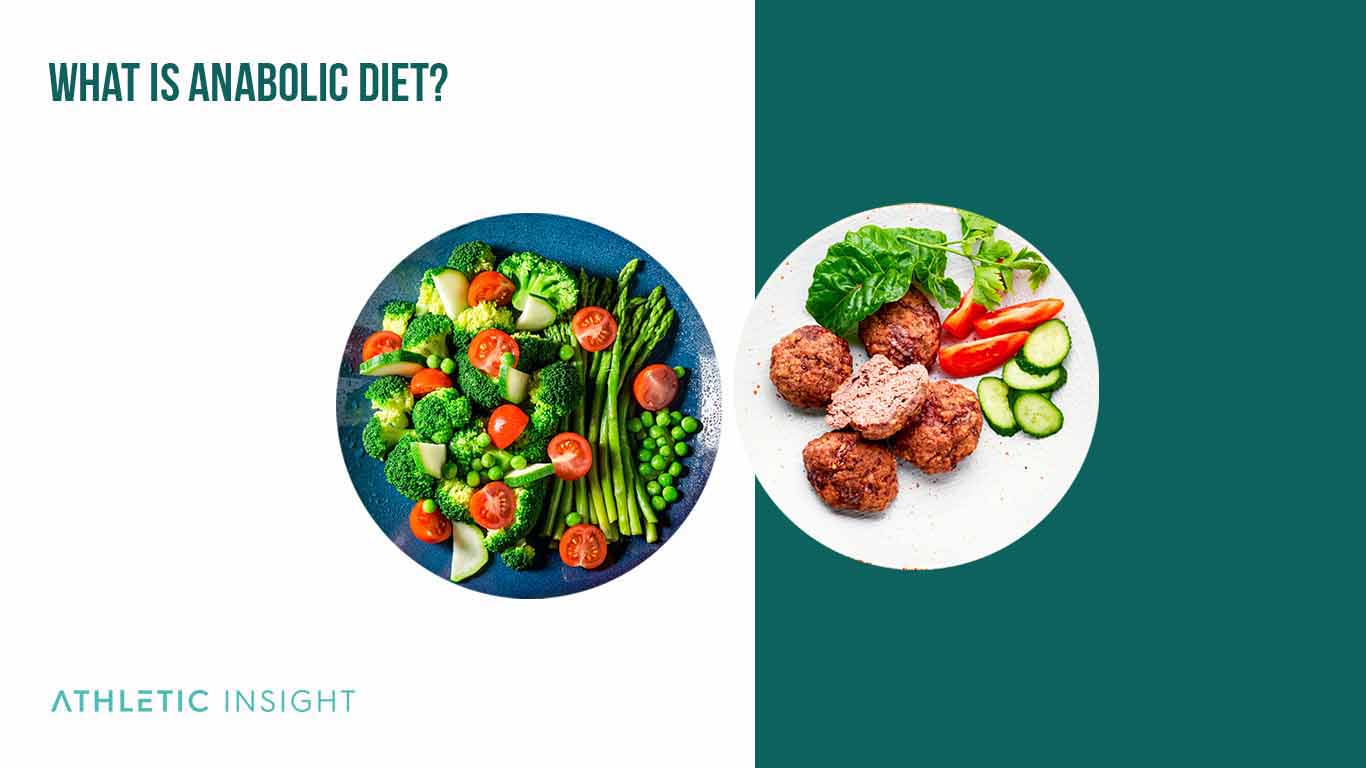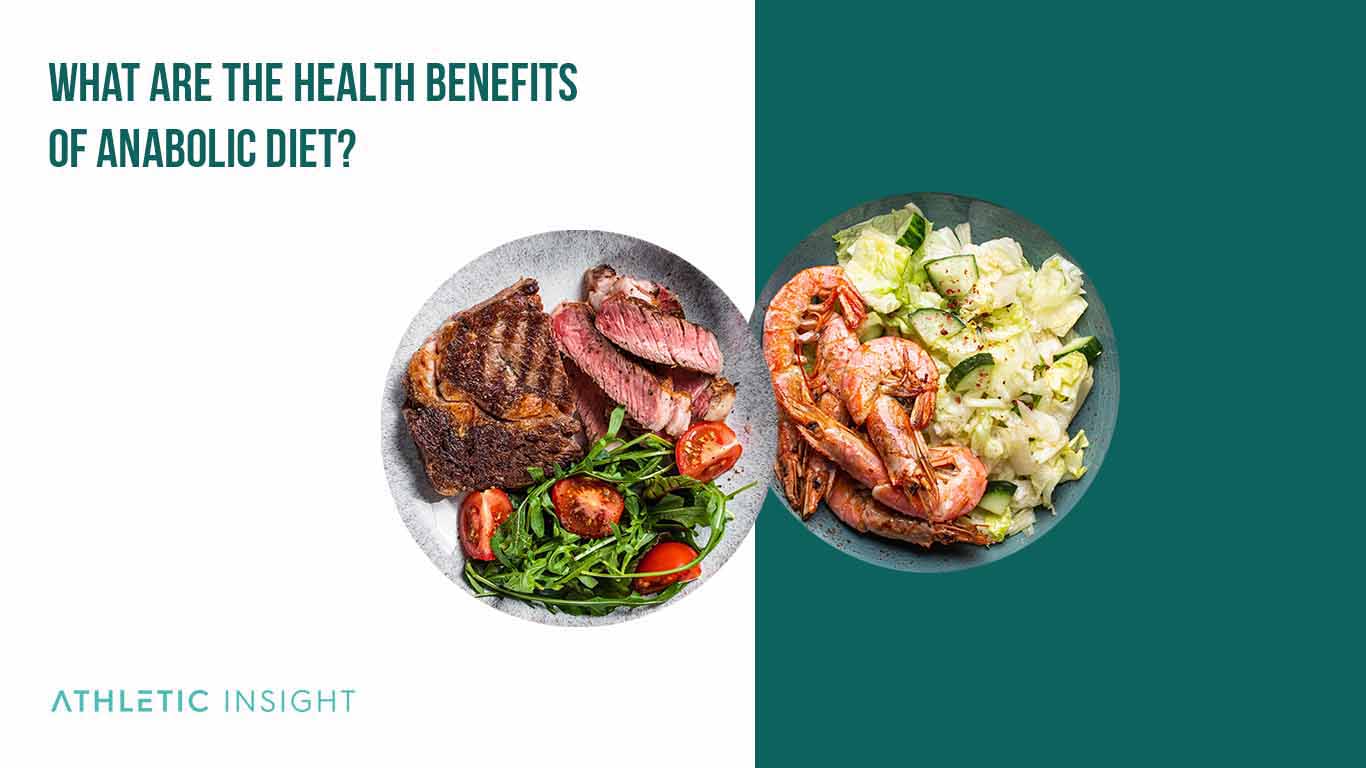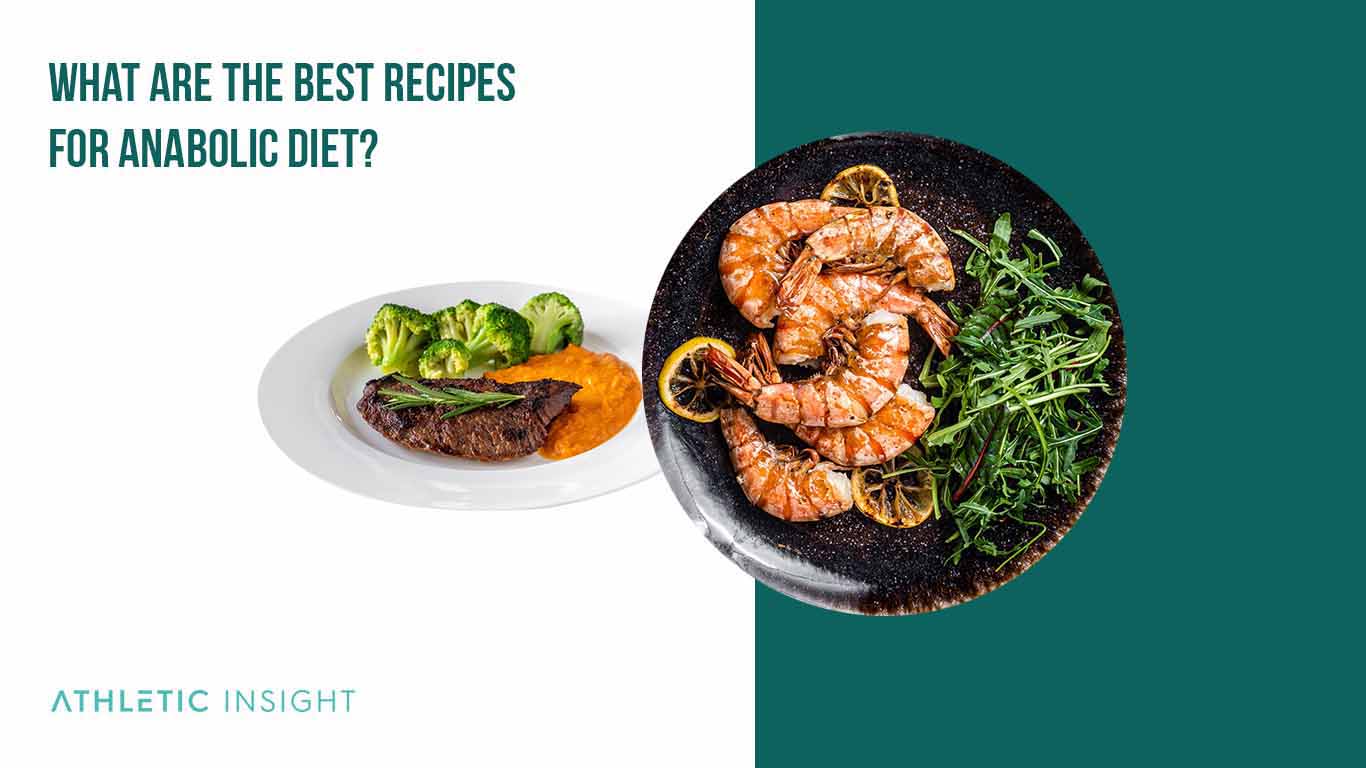Mauro DiPasquale, PhD. created the anabolic diet to optimize the body’s fat-burning abilities. The Anabolic Diet is a low-carbohydrate diet that maximizes benefits by alternating low-carb and high-carb days. DiPasquale is a competitive powerlifter and named the diet because rotating high and low-carb days can mimic the effects of anabolic steroids.
Following an anabolic diet can optimize your body’s fat-burning abilities and help you achieve your health and fitness goals. The diet is easy to follow and customizable to your individual needs, making it an ideal choice for people looking to improve their overall health.

More Muscle & Strength
Increased Fat Loss
More Testosterone
You can practice the anabolic diet by eating low-carb meals during the week and high-carb foods on the weekend. This causes the body to target fat for muscle mass, allowing you to lose fat cells and gain muscle mass while eating lower-calorie meals.
Some other low-carb diets include the ketogenic diet, the Mediterranean diet, and the Atkins diet, but the anabolic diet is specifically for athletes and bodybuilders. Read on if you want to learn more about the anabolic diet, its benefits, and how to implement it into your lifestyle.
What Is an Anabolic Diet?
The anabolic diet is a type of diet that uses cyclical ketogenic activity consisting of periods of low-carbohydrate eating followed by higher-carbohydrate eating. This type of diet helps give your body the tools to burn fat efficiently for energy.

Ketogenic diets like the anabolic diet are lower in carbohydrates than other diets and higher in proteins and fats. Following a keto diet forces your body to burn fat instead of carbohydrates for fuel. Eating smaller amounts of carbs causes the body to enter a metabolic state known as ketosis, where your body burns fat for energy.
The anabolic diet differs from other ketogenic diets because it does not limit carbohydrates entirely. Instead, the anabolic diet alternates between low-carb days and higher-carbohydrate refeeding days. This rotation helps to keep the body in an anabolic state and allows for more significant fat loss.
The anabolic diet also emphasizes consuming anabolic foods, which are high in protein and low in carbohydrates. These anabolic foods provide your body with the essential muscle-building and fat-burning nutrients while allowing you to stay in a mild state of ketosis.
How Does Anabolic Diet work?
The Anabolic diet focuses on two vital bodily reactions. The first one is that when your body enters ketosis due to a lack of carbs, your body burns fats and amino acids for energy. The second principle is that androgen production correlates with the amount of saturated fat consumed.
The anabolic diet works by combining the two principles. On low-carb days, your body will go into ketosis and burn fat for fuel. On higher-carb days, your body will have an influx of calories for energy and muscle-building.
Shifting between low-carb and high-carb diets changes your diet and boosts your metabolism. This cycling between low-carb and high-carb days helps you lose fat while preserving muscle mass.
Since the high-carb days are recovery days, you should avoid heavy exercise on the weekends. Focusing your powerlifting and bodybuilding exercises on low-carb days would be best to maximize fat-burning and muscle growth.
The main goal of the anabolic diet is to maximize fat loss while maintaining muscle mass, which allows your body to build and use a more significant amount of muscle, even in a caloric deficit. It targets your digestive system, muscles, and fat stores to divide energy between the parts of your body that are working the hardest.
When you first begin the anabolic diet. Your body will have a distinct reaction. It will take 7 to 10 days for your body to adapt to the anabolic diet and enter into ketosis. During this adaptation period, you will experience a decrease in energy, cravings, and hunger.
Once your body has adapted to the anabolic diet, you can easily switch between high-carb and low-carb days, which allows your body to burn fat for energy on low-carb days and use the high-carb days to fuel your muscles and increase androgen production.
What Is the Main Purpose of the Anabolic Diet?
The primary purpose of the anabolic diet is to help you burn fat and build muscle. It is an effective way to lose fat and maintain muscle mass while in a caloric deficit. The anabolic diet also helps to minimize cravings and control hunger, making it easier to stay on track with healthy eating habits.
The anabolic diet helps to maximize androgen production, which can help increase strength, reduce body fat, and improve muscle-building results.
How To Do the Anabolic Diet?
To correctly perform macronutrient carb cycling, you need to split your week into two parts. You should separate your week into high-carbohydrate weekends and low-carbohydrate weekdays.
Here are the steps for completing the anabolic diet correctly during the weekends.
- Focus on eating anabolic carbohydrates such as white potatoes, sweet potatoes, brown rice, oats, and other complex carbohydrates
- Try to consume enough carbohydrates to fuel and build your muscles, but not so much that it causes fat storage
- Aim to get 60-80% of your calories from carbs
Here are the steps for completing the anabolic diet correctly during the weekdays.
- Focus on eating anabolic proteins and fats
- Aim for 20-30% of your calories to come from protein
- Aim for 60-65% of your calories to come from fats
- Aim for about 10% of your calories to come from carbs with your total carb intake at less than 30g per day
- Supplement the diet with vitamins and minerals to ensure that your body has the necessary nutrients for muscle recovery and growth

More Muscle & Strength
Increased Fat Loss
More Testosterone
What Are the Phases of the Anabolic Diet?
The Anabolic diet has three phases; maintaining, bulking, cutting.
- Maintaining
- Bulking
- Cutting
The Maintaining phase is the most important. This is when you establish your diet. This phase lasts four weeks. During this phase, you adjust to the anabolic diet. During this phase, you will eat high amounts of protein and good fats with low carbohydrates.
To calculate the calories you should eat during the maintenance/introduction phase, take your body weight in pounds and multiply it by 18.
The Bulking phase is when you start to increase your calories. You will add carbohydrates to your diet during this phase while reducing fats. During this phase, you will calculate your ideal and bulk body weights.
If your ideal body weight is 190 pounds, you can calculate your bulk weight by adding 15% to your ideal body weight. If your ideal body weight is 190 pounds, your bulk weight is 218 pounds. To achieve your bulk weight, you need to eat 20-25 calories per pound for your ideal body weight. You should continue this phase until you reach the bulk weight or 10% body fat.
The Cutting phase is the last phase of the anabolic diet, and it’s when you start to lower your calories to reach your ideal weight. During this phase, you will eat fewer carbohydrates and more proteins and fats. Your diet will be similar to the Maintenance stage.
To determine your calorie intake, multiply your body weight by 18 and subtract 500-1000. You should lose around 1.5-2 pounds per week at this deficit.
During the Cutting phase, your body will undergo tremendous changes. You will lose weight rapidly but also suffer from low energy, lethargy, and irritability due to the caloric deficit. You will feel these symptoms more as you increase your calorie deficit.
The phases of the anabolic diet—Maintaining, Bulking, and Cutting—are each important to follow if you want to see the full effects of the diet.
What Are the Health Benefits of an Anabolic Diet?
There is a wide range of benefits to the Anabolic diet such as increased fat loss, improved muscle growth, increased strength, reduced cravings and hunger, improved energy levels, and more testosterone and growth hormone.

- Increased Fat Loss: The combination of a caloric deficit and carb cycles helps maximize fat loss.
- Improved Muscle Growth: The diet helps promote muscle growth by providing the necessary nutrients for muscle recovery and growth.
- Increased Strength: The anabolic diet helps to maximize androgen production, which can help increase strength.
- Reduced Cravings and Hunger: This diet helps to minimize cravings and control hunger, making it easier to stay on track with healthy eating habits.
- Improved Energy Levels: The carb cycles help to increase energy levels by providing essential nutrients for the body.
- More Testosterone and Growth Hormone: The anabolic diet helps to increase testosterone and growth hormone production, which can help with muscle building.
What Are the Health Risks of an Anabolic Diet?
Despite the advantages of this diet, the Anabolic diet has some risks such as poor nutrition, high cholesterol, kidney damage, poor digestion and constipation, and insulin resistance.
- Poor Nutrition: Focusing on protein and fats can cause you to lack the vitamins and minerals needed for overall health.
- High Cholesterol: The high-fat content of the diet can increase cholesterol levels, which can increase your risk of cardiovascular diseases.
- Kidney Damage: The diet’s high-protein content can strain the kidneys, potentially leading to kidney stones and damage.
- Poor Digestion and Constipation: The lack of fiber in this diet can cause poor digestion and constipation.
- Insulin Resistance: The diet’s high-fat content can increase insulin resistance, potentially leading to type 2 diabetes.
What Are the Foods That You Can Eat While on an Anabolic Diet?
The focus of the anabolic diet is protein and fats. An anabolic diet diet food list will give you examples of what you should eat while on this diet. On your low-carb days, you should eat the following foods.
- Protein: beef, pork, poultry
- Eggs: whole eggs
- Full-Fat Dairy: sour cream, cheese
- Healthy Oils: olive oil, coconut oil, canola oil
- Nuts and Deeds: peanuts, walnuts, sunflowers
- Vegetables: lettuce, broccoli, celery
On high-carb days, you can also eat the following.
- Whole Grains: oats, quinoa, brown rice
- Fruits: bananas, apples, oranges
- Starchy Vegetables: Potatoes and sweet potatoes
- Legumes: lentils, beans
These foods are important because they provide essential nutrients, vitamins, and minerals that help support overall health. The protein will support muscle growth, and the lack of carbs will encourage your body to burn fat.
What Foods Can’t You Eat While on an Anabolic Diet?
While you are on the anabolic diet, most foods are not entirely off-limits. However, it would be best if you avoided the following.
- Processed Foods: chips, cookies, candy
- Refined Grains: white bread, pasta
- Sugary Drinks: soda, juice
- High-Fat Meats: bacon, sausage
- Fried Foods: french fries, fried chicken
- Processed Sugar: white sugar, corn syrup
These foods are not part of the anabolic diet because they can increase your risk of diseases and do not provide the essential nutrients that your body needs. Plus, they give a lot of empty calories, which can cause you to gain fat.
Who Should Do an Anabolic Diet?
The anabolic diet is best for those looking to build muscle and lose fat. It can be especially effective for bodybuilders, powerlifters, and athletes. It is also ideal for people willing to commit to a diet for an extended period of change. People often do this diet to prepare for competitions or to gain muscle mass quickly.
This diet is not ideal for those looking to maintain weight or those with severe medical conditions. It is also important to note that this diet can be challenging to follow and requires careful planning for optimal results. Therefore, speaking to your doctor before beginning any new diet is essential.
What Are the Best Recipes for Anabolic Diet?
The best recipes for the the Anabolic diet include protein pancakes, shrimp tacos with rice and beans, sweet potato stuffed with ground beef, pasta with tomato sauce and grilled chicken, berry and protein shake.

- Protein Pancakes: Adding a scoop of protein power is a great way to add protein to your breakfast.
- Shrimp Tacos with Rice and Beans: Adding beans to your tacos is a great way to boost protein consumption.
- Sweet Potato Stuffed with Ground Beef: Sweet potatoes are lower carb than regular potatoes.
- Pasta with Tomato Sauce and Grilled Chicken: This is a great way to get complex carbs and protein in one meal.
- Berry and Protein Shake: Adding a scoop of protein powder to your shake is an easy way to up your protein intake.
What Are the Facts About the Anabolic Diet?
You should know some essential facts about the anabolic diet, including what happens the first week, what high-carb foods are, the benefits, health concerns, and the length of the diet.
- The First Week: During the first week, you will likely experience some fatigue due to the lack of carbs. Additionally, you may feel very hungry.
- High-Carb Foods: High-carb foods are essential for the anabolic diet. They help replenish glycogen stores and support muscle growth.
- Benefits: The anabolic diet can help you lose fat, build muscle, and increase energy. It can also improve hormone balance and reduce inflammation.
- Health Concerns: There are some health concerns to consider with the anabolic diet, such as dehydration, electrolyte imbalance, and mineral deficiency.
- Length of the Diet: An anabolic diet is a long-term approach. It typically takes 6-8 weeks to reach peak performance.
How Long Should You Do an Anabolic Diet?
The anabolic diet is an effective way to build muscle and lose fat, but you shouldn’t follow it continuously. The length of the diet depends on an individual’s goals and how much weight they want to lose. Generally, you stay on the anabolic diet for at least 6-8 weeks. However, some people may need to stay on it for a longer period if they have extreme goals.
You can also complete an anabolic cycle multiple times. Make sure to take a break after each cycle of 6-8 weeks and give your body time to rest before starting again.
How Long Will It Take To See the Results of an Anabolic Diet?
The results from an anabolic diet will vary from person to person. Generally, it can take a few weeks to start seeing the results as your body adjusts to the new diet. With dedication and consistency, you can expect to see results within 6-8 weeks of starting the anabolic diet.
How Much Does the Anabolic Diet Program Cost?
The anabolic diet program is typically free to follow. However, you may need to purchase some of the food items required for the diet and any supplements you choose to take. You may need to invest in some gym equipment or sign up for a gym membership if you pursue the anabolic diet for bodybuilding.
Purchasing food for the anabolic diet may be more expensive than usual because you are consuming more protein and fat than usual, which is more costly than traditional groceries.
How Much Fat Do You Need on the Anabolic Diet?
The anabolic diet requires a high intake of fat. During the low-carb phase, you should consume at least 65% of your daily calories in fat. Your diet should include healthy fats such as olive oil, avocados, coconut oil, nuts, and seeds.
During the high-carb phase, you will still need to consume a significant amount of fat. You should consume at least 50% of your daily calories through fat.
Is the Anabolic Diet Considered a Healthy Diet?
Yes, the anabolic diet is healthy because it encourages you to eat healthy whole foods. However, as with any diet, there are some potential health risks to consider. Also, ensure to stay hydrated and get adequate electrolytes.
The heavy emphasis on fat and protein can also leave you without enough vitamins from fruits and vegetables. If you commit to the anabolic diet for an extended time, you should supplement your diet with multivitamins or other supplements.
Make sure to consult your doctor before starting any diet, especially if you have any pre-existing medical conditions or take medications.
Does Meal Timing Matter with the Anabolic Diet?
Yes, the meal timing does matter with the anabolic diet. During the low-carb phase, it is crucial to time your meals and snacks to provide your body with the nutrients it needs throughout the day. Timing meals and snacks to optimize muscle gains during the high-carb phase is essential.
Focus on eating small meals throughout the day and combining proteins, carbs, and fats in each meal. Eating small meals will keep your energy levels stable and help you stay full until your next meal.
Is Anabolic Diet for Weight Loss?
Yes, you can use the anabolic diet for weight loss and muscle building. However, weight loss is the last phase of the diet, and you will gain weight first. During the bulking stage, you should expect to gain significant weight.
You will only lose weight during the cutting stage and will likely put on considerable muscle. There are many different and more effective options if you want a diet for weight loss.
Is it possible to build muscle while on an Anabolic diet?
Yes, it is possible to build muscle while on an anabolic diet. During the bulking phase, you should expect to gain a significant amount of muscle as long as you perform exercises. During the Cutting phase, it is possible to maintain muscle mass if you focus on eating enough protein.
What is the difference between an Anabolic and a Ketogenic Diet?
The anabolic diet is similar to the ketogenic diet because they are both low-carb diets. However, the anabolic diet includes two high-carb days when you are carb cycling, while the ketogenic diet does not. The ketogenic diet does not explicitly include bulking and Cutting phases. The anabolic diet consists of these two phases to help you bulk up and then cut down to reveal muscle definition.

More Muscle & Strength
Increased Fat Loss
More Testosterone



